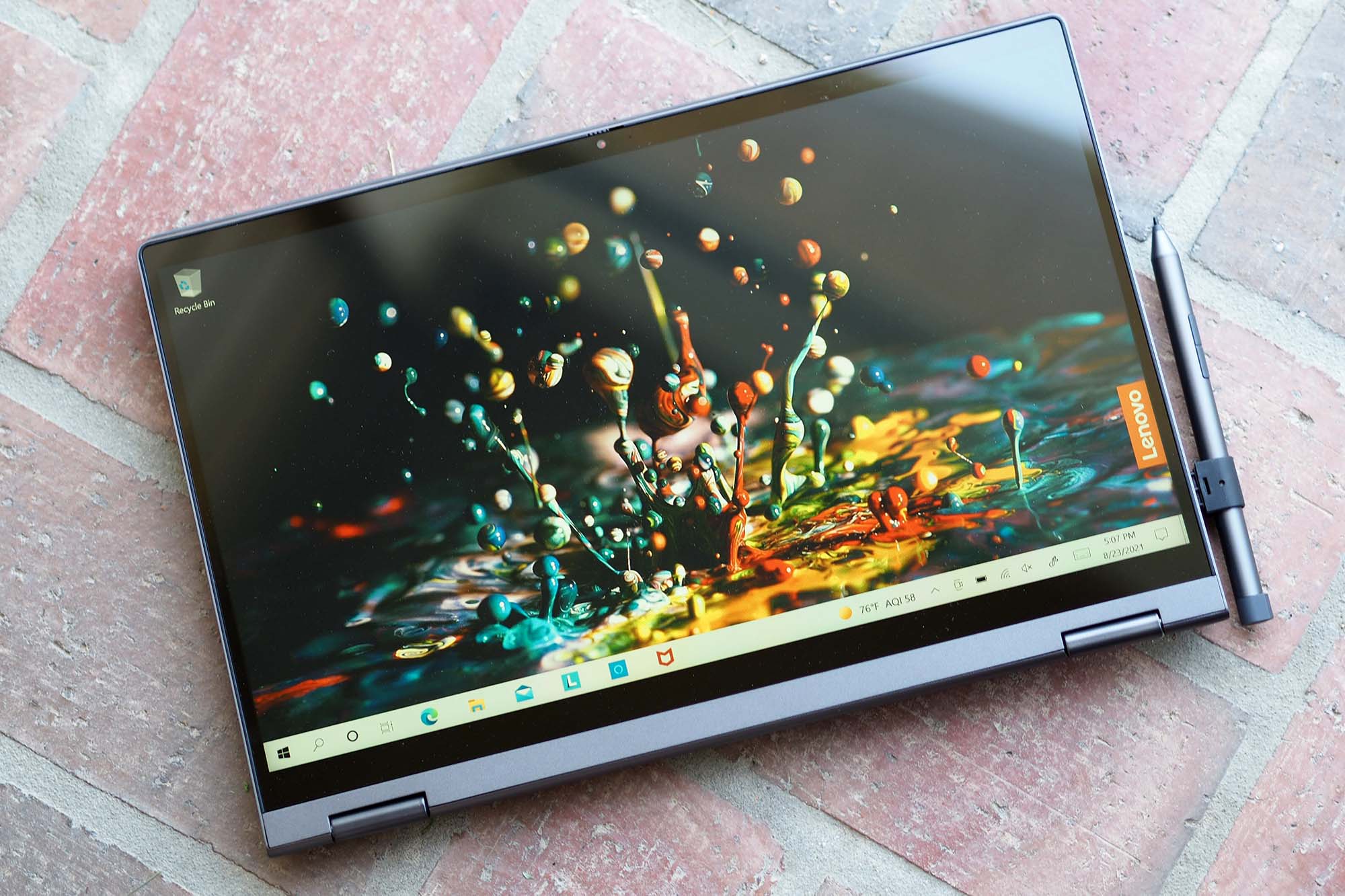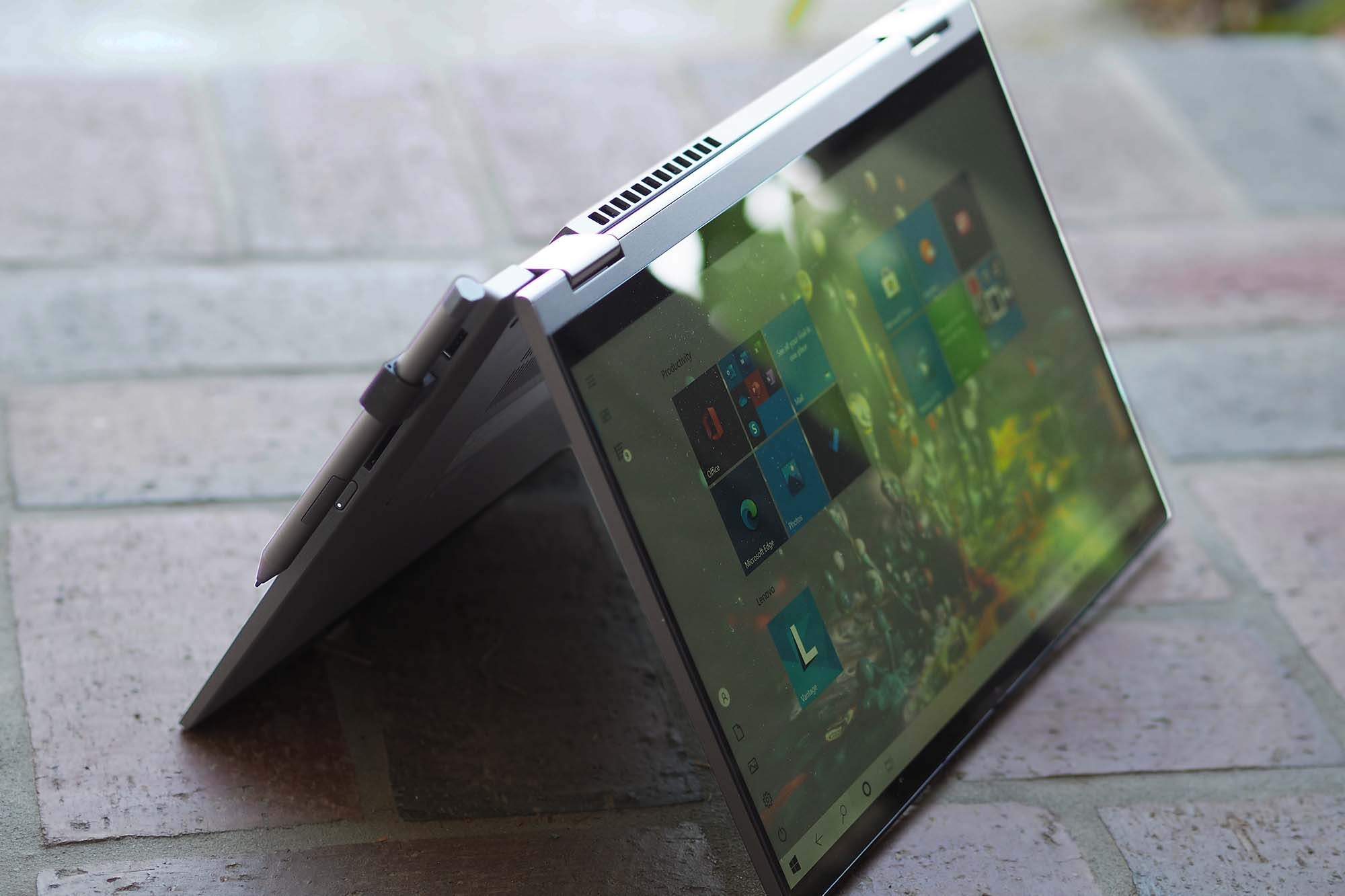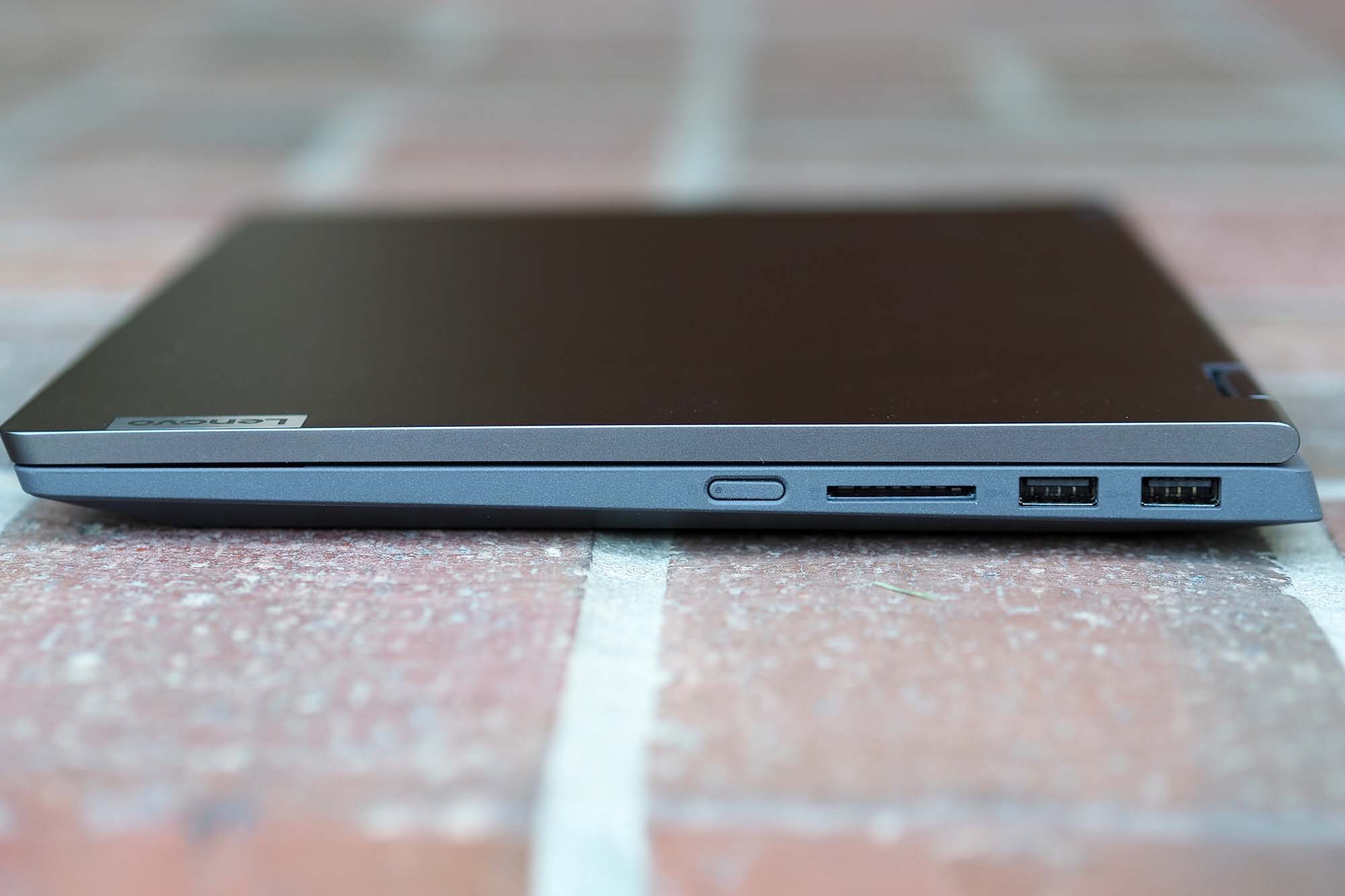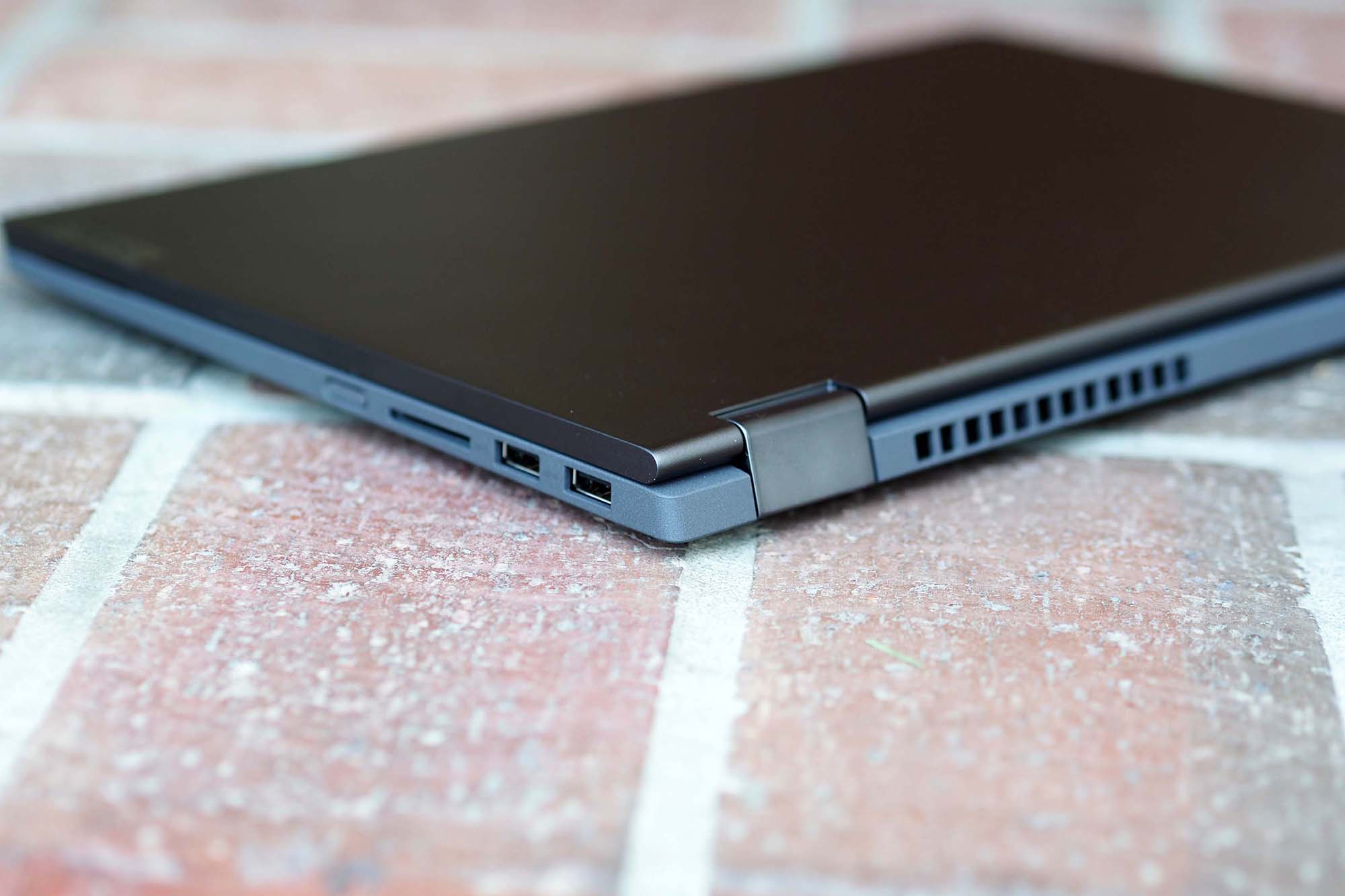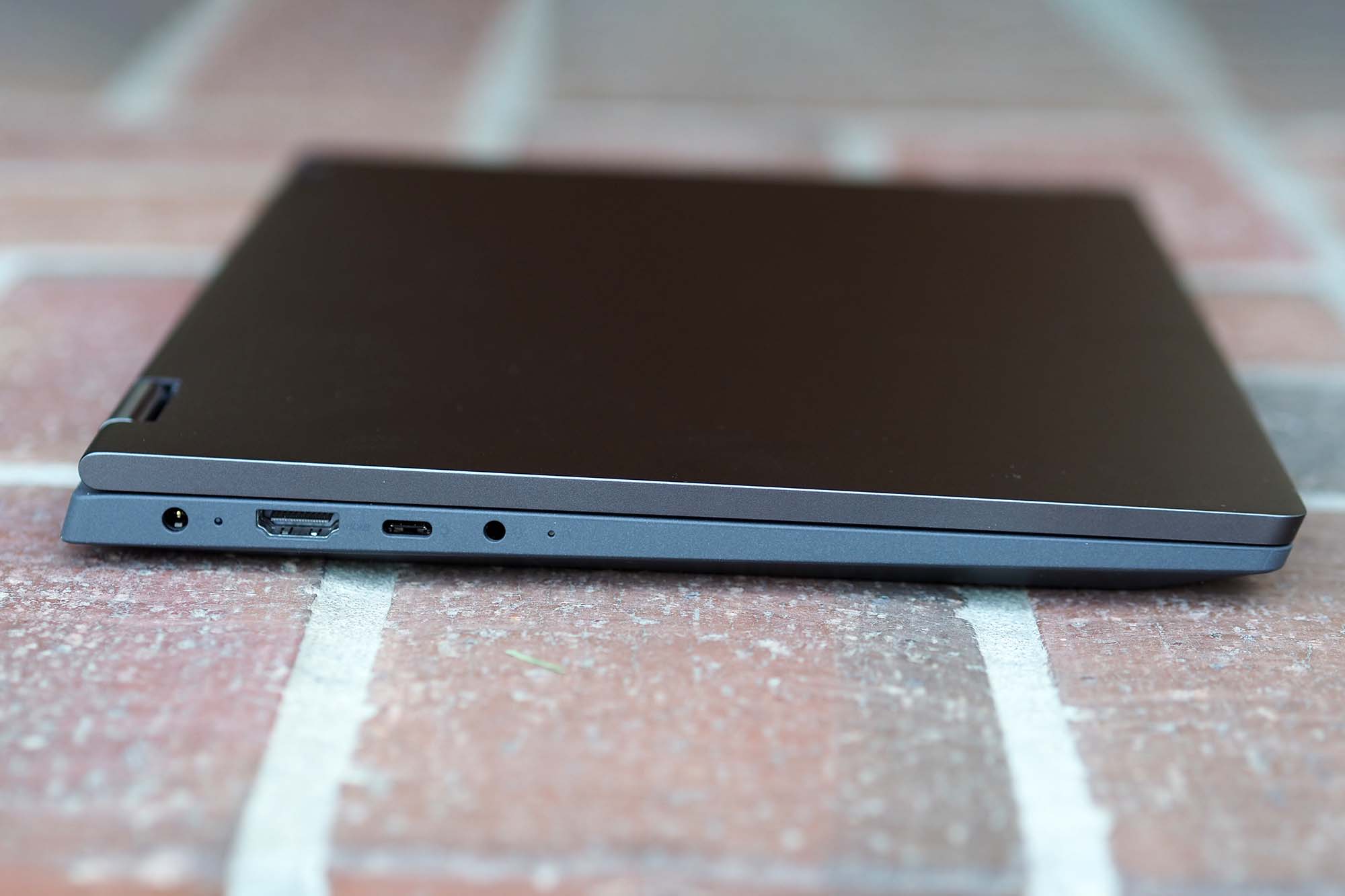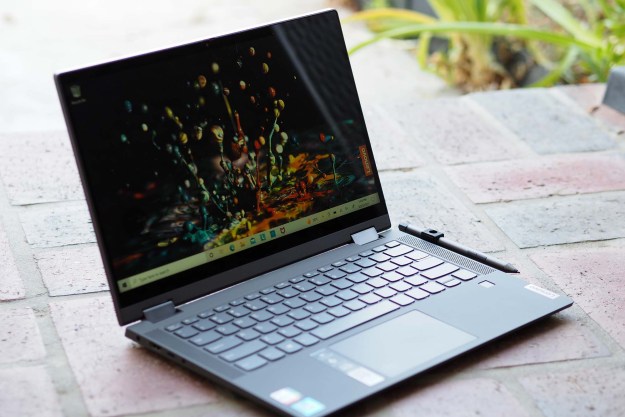
“With Intel inside, Lenovo's IdeaPad Flex 5i 14 loses both performance and battery life compared to its AMD-powered cousin.”
- Solid build quality
- Comfortable keyboard and touchpad
- Good speakers
- Active pen included
- Unimpressive performance
- Mediocre battery life
- Unacceptable display
I reviewed the AMD Ryzen version of the Lenovo IdeaPad Flex 5 14 convertible 2-in-1 laptop last year, and found it to offer a ton of performance for a very attractive $600 price. It didn’t quite make our list of best budget laptops, but it was close. This year, I was offered the chance to review the 2021 refresh, which doesn’t change much — most notably, Intel is on tap this time around. I looked forward to seeing how this version compares.
I reviewed the $735 midrange configuration of the IdeaPad Flex 5i 14 with a Core i5-1135G7, which is the right Intel chip to compare to the Ryzen 5 4500U in the previous review unit. That’s barely a budget laptop price (although it does double the storage over the AMD machine), and I found the Intel version offers less value than last year’s model. You can get a Core i3 for a more attractive $570, but you give up half the RAM and storage. In the end, it proves why AMD continues to be the leader in budget
Design
The IdeaPad Flex 5i 14 follows the same design as the previous model, but with glass fiber mixed into the plastic lid to give it a sturdier feel. The rest of the chassis is all plastic, but it still feels solid — more so than some premium
The IdeaPad’s hinge is also surprisingly good, being loose enough to open with one hand, but then stiffening when it reaches an upright position to hold it in place in clamshell, tent, media, and tablet modes. Overall, the IdeaPad Flex 5i’s build quality exceeds its price tag.
The 2-in-1 maintains its dark grey aesthetic, with just a touch of chrome in the Lenovo logo on the lid and the keyboard deck. It’s a very understated look, with a few angles to give it a streamlined appearance, following the minimalist trend Lenovo has used in its budget and midrange designs. The Asus VivoBook Flip 14 is a little more dynamic in its appearance, but that doesn’t mean it’s better-looking — it actually suffers from a lime green lining around the Enter key that breaks up its color scheme. I’d say the IdeaPad Flex 5i looks better than it costs, and it won’t make you feel like you’re slumming it when you take it to a posh coffeehouse.
Like last year’s model, though, the IdeaPad Flex 5i 14 is larger than it should be. Its display bezels are thin on the sides but large on top, and the chin is huge. That makes it deeper than necessary. It’s also quite thick at 0.82 inches and slightly heavy at 3.3 pounds. The Lenovo Yoga 7i 14 (about $200 more than the IdeaPad) is 0.69 inches and 3.09 pounds, while the Asus VivoBook Flip 14 comes in at 0.72 inches and 3.31 pounds. If there’s one area where the IdeaPad Flex 5i shows off its low-cost nature, it’s in the oversized nature of its chassis.
Connectivity is solid, with a proprietary power connector (although my review unit came with a USB-C charger), USB-C 3.2 port, full-sized HDMI 1.4b port, and 3.5mm audio jack on the left-hand side, and two USB-A 3.2 ports and a full-size SD card reader on the right-hand side. Unfortunately, there’s no Thunderbolt 4 support, which is disappointing even at a $735 price point. Wi-Fi 6 and Bluetooth 5.0 provide wireless connectivity.
Performance
We lauded the AMD version of the IdeaPad Flex 5 for its performance thanks to its Ryzen 5 4500U. At the time, that was impressive, but what a difference a year makes. That’s now a previous-generation chip, and the new Ryzen 5000 series processors are significantly faster — and the delta between the previous version and the current 11th-gen Intel version is also less significant. My review unit equipped the Core i5-1135G7 to go with 16GB of
Don’t bother with gaming.
In all cases, except against the Acer Aspire 5 with its core i3-1115G4 that was included for some contrast, the IdeaPad Flex 5i didn’t impress. It was slower in all but the 3DMark Time Spy test than the previous AMD model, including quite a bit slower in our Handbrake test that encodes a 420MB video as H.265. In all our benchmarks, it was also slower than the other Core i5
In real-life use, I didn’t notice the IdeaPad Flex 5i being a slow laptop. But then again, virtually all modern
| Geekbench (single/multi) | Handbrake (seconds) |
Cinebench R23 (single/multi) | PCMark 10 | 3DMark Time Spy | |
| Lenovo IdeaPad Flex 5i 14 (Core i5-1135G7) |
1397/4301 | 213 | 1325/4411 | 4550 | 1026 |
| Lenovo IdeaPad Flex 5 14 2020 (Ryzen 5 4500U) |
1096/4543 | 160 | n/a | n/a | 957 |
| Asus VivoBook Flip 14 (Ryzen 5 5500U) | 1102/5432 | 131 | 1180/7579 | 5191 | 1099 |
| Lenovo ThinkBook 13s Gen 2 (Core i5-1135G7) |
1406/5379 | 178 | 1357/5502 | 4668 | 1511 |
| HP Envy 14 (Core i5-1135G7) | 1549 / 5431 | 204 | 1399 / 4585 | n/a | 1380 |
| Acer Aspire 5 2021 (Core i3-1115G4) | 1215/2544 | 300 | 1274/3128 | 3752 | 652 |
Don’t bother with gaming. The IdeaPad Flex 5i is limited to Intel Iris Xe graphics, and it didn’t perform very impressively even for that chip. Its 3DMark Time Spy test wasn’t great, and it only hit 16 frames per second (fps) in Fortnite at 1080p and high graphics. You’ll want to look elsewhere for your gaming needs.
Display

The second I turned on the IdeaPad Flex 5i 14, I knew that the 14-inch Full HD (1,920 x 1,080) IPS display would be its primary weakness. The colors seemed off, the screen had an unpleasant yellow-green tint, and the contrast didn’t blow me away. I don’t often react so badly to a display, but this one was disappointing. Note that the display is in the old-school 16:9 aspect ratio, as taller displays haven’t yet made so much headway in budget
My colorimeter mostly confirmed that subjective experience. To begin with, brightness was low at just 231 nits, well below our preferred 300-nit threshold. That means the display might be hard to read with bright overhead lighting. The contrast was better than I expected at 800:1 (but again below our preferred level, 1,000:1). Colors were very narrow at just 49% of AdobeRGB and 65% of sRGB — midrange and premium
Yes, budget
The audio was better, with upward-firing speakers flanking the keyboard on each side. Volume was more than acceptable with zero distortion, and while bass was lacking, mids and highs were clear. You’ll be able to watch some Netflix and listen to music with these speakers, which is better than most budget machines.
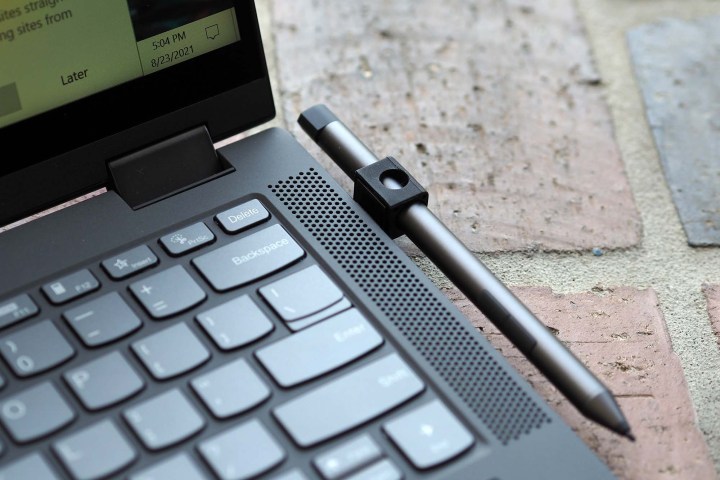
Keyboard and touchpad
The IdeaPad Flex 5i has the usual Lenovo keyboard that you’ll find on everything but the ThinkPad line. It’s shallower than I like, but it has enough of a click and a comfortable enough bottoming action to allow for precise touch typing. The generous key spacing and key size help make this a good budget keyboard that’s only a couple of steps behind excellent keyboards like HP’s Spectre line and the Apple Magic Keyboard. Fast typists should adjust to this keyboard quickly enough and get up to speed in short order.
The touchpad is also good, with a decent size and a smooth and comfortable surface. The Microsoft Precision Touchpad drivers enable the full suite of Windows 10 multitouch gestures, all of which worked well. I have no complaints.
The touch display was responsive, and Lenovo includes an active pen with 4,096 levels of pressure sensitivity. I found it quite good for sketching (not that I’m an artist) and handwriting on the display, although the 14-inch display and overall bulk of the 2-in-1 made it uncomfortable in tablet mode. Still, including the pen in the box is a plus that few budget
Finally, Windows 10 Hello support is provided by a fingerprint reader on the upper-right corner of the keyboard deck. It was fast and reliable. Lenovo also equipped the IdeaPad Flex 5i with its ThinkShutter privacy screen for the webcam — just slide it over and the lens is physically blocked, giving you a touch of privacy.
Battery life
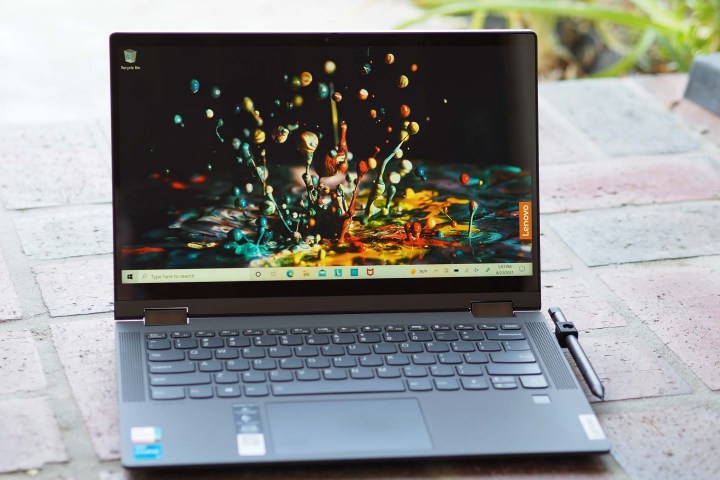
The IdeaPad Flex 5i retains the 52.5 watt-hour battery of its predecessor, which, when combined with the Core i5 and the 14-inch Full HD display, left me wondering what kind of longevity to expect. The AMD model was just OK in terms of battery life, able to maybe eke out a full day’s work on a charge if you didn’t push it too hard.
Overall, the IdeaPad Flex 5i’s battery life is disappointing.
According to our benchmarks, the Intel version dropped just below that threshold of all-day battery life. It lasted just 7.25 hours in our web-browsing test, compared to the AMD version’s eight hours, and 11.5 hours in looping our local Avengers test video, where the AMD version lasted for 11 hours. So that’s a toss-up, although the web test gives a better idea of productivity performance. The Asus VivoBook Flip 14 made it to nine hours of browsing the web and 12 hours in the video test — stronger scores for sure.
I also ran the PCMark 10 Applications battery test, where the IdeaPad Flex 5i managed nine hours. That’s just seven minutes less than the AMD version, but under the 10 or more hours we’ve seen as a minimum with most other
Overall, the IdeaPad Flex 5i’s battery life is disappointing. Like the AMD version, it might take you through a day’s work if your workflow is light, but getting real work done without plugging in might be a challenge.
Our take
At $600, the AMD version of the IdeaPad Flex 5 14 was a well-performing bargain. At $735, with the main difference being a 512GB SSD versus a 256GB SSD, the latest IdeaPad Flex 5i isn’t quite so attractive. It doesn’t perform as well, and it doesn’t keep up with some other
There are other
Are there any alternatives?
The Asus VivoBook Flip 14 is around the same price and offers significantly better performance. The display and battery life aren’t any better, but at least you’ll get a faster laptop that can handle more demanding workloads.
If you don’t need a 2-in-1, then the Asus ZenBook 13 OLED UM325UA is a great choice. It’s within a couple of hundred dollars of the IdeaPad Flex 5i, but it offers much better performance, a gorgeous and color-accurate OLED display, and a 1TB PCIe SSD. If your budget can handle it, then the ZenBook 13 should be on your list.
Another 2-in-1 to consider is the HP Envy x360 13. It’s also an AMD machine and so much faster, and it has a much better display. It’s also a bit more expensive, but it’s worth the extra cash.
How long will it last?
The IdeaPad Flex 5i 14 offers solid construction that should evoke confidence in years of service. Its components are up to date, if not the fastest, so it should keep you productive for just as long. You won’t like the industry-standard one-year warranty.
Should you buy it?
No. Take away the performance of the AMD processor from its predecessor and add on more than $100 to the price, and the IdeaPad Flex 5i 14 isn’t so much of a bargain.
